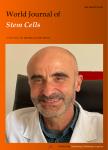Vibration stimuli and the differentiation of musculoskeletal progenitor cells: Review of results in vitro and in vivo
Vibration stimuli and the differentiation of musculoskeletal progenitor cells: Review of results in vitro and in vivo作者机构:Kroto Research Institute and INSIGNEO Institute for in silico Medicine Department of Materials Science and Engineering University of Sheffield Institute of Medical and Biological Engineering Faculty of Biological Sciences University of Leeds
出 版 物:《World Journal of Stem Cells》 (世界干细胞杂志(英文版)(电子版))
年 卷 期:2015年第7卷第3期
页 面:568-582页
核心收录:
学科分类:1002[医学-临床医学] 1010[医学-医学技术(可授医学、理学学位)] 100215[医学-康复医学与理疗学] 10[医学]
基 金:Engineering and Physical Sciences Research Council
主 题:Mesenchymal stem cells Mechanobiology Osteogenesis Whole body vibration Adipogenesis,osteoporosis Low magnitude, high frequency vibrationloading
摘 要:Due to the increasing burden on healthcare budgets of musculoskeletal system disease and injury, there is a growing need for safe, effective and simple therapies. Conditions such as osteoporosis severely impact onquality of life and result in hundreds of hours of hospital time and resources. There is growing interest in the use of low magnitude, high frequency vibration(LMHFV) to improve bone structure and muscle performance in a variety of different patient groups. The technique has shown promise in a number of different diseases, but is poorly understood in terms of the mechanism of action. Scientific papers concerning both the in vivo and in vitro use of LMHFV are growing fast, but they cover a wide range of study types, outcomes measured and regimens tested. This paper aims to provide an overview of some effects of LMHFV found during in vivo studies. Furthermore we will review research concerning the effects of vibration on the cellular responses, in particular for cells within the musculoskeletal system. This includes both osteogenesis and adipogenesis, as well as the interaction between MSCs and other cell types within bone tissue.



